10 awful destinations I’ll never, ever visit again — Or do you enjoy giant wharf rats invading your hotel room?
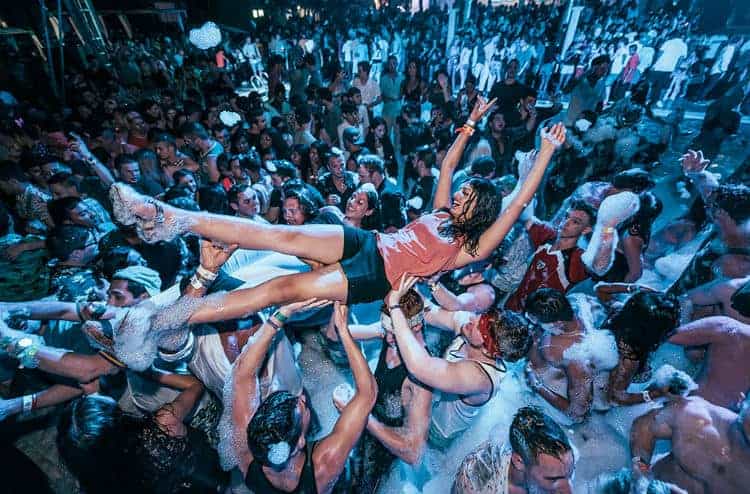
Buon anno, tutti! (Happy New Year, everybody!) Has anyone’s level of optimism risen above the Mariana Trench? Come on. Cheer up. Vaccines have arrived and so has a regime change in the U.S. The ice caps haven’t melted from neglect — yet. It’s time to travel in 2021.
I’ve already written about my bucket list for this year and my annual list of underrated towns in Italy. I’ve always said during my 41 years of international travel, there aren’t many places to which I would not return. I’m lucky. I always see the good in cultures, the lure of each destination. Hell, I once loved a week in Haiti. I have a soft spot for everywhere I’ve been.
But not all of them.
Yes, some places I’ve visited would not get me back except via plane crash. They’re like bad restaurants. The person at the table next to you might love his meal but you spent the night in the bathroom. Many on my list were just bad experiences, comparable to eating the Roman street dish pajata (intestines of an unweaned calf) for the first time. But many places have a general repulsiveness that I can not overlook. Much of it is due to tourism gone amok or an infrastructure so broken it makes every day of travel feel like the Bataan Death March.
So as you formulate your travel plans while keeping an eye on your Covid curve, here are my top 10 awful destinations to which I’d never return, in order. You have a bucket list? This is my shit list. Go ahead and go. Everyone’s experiences are different. But remember.
You’ve been warned.

Tentena, Indonesia
Of all my terrible travel experiences, this is in my top three. Tentena (pop. 1,800) is a village in Sulawesi, Indonesia’s weird-looking, octopus-shaped island. Tentena had no refrigeration which became problematic when I arrived after a 10-hour bush taxi ride through the steaming jungle. My mouth was bone dry and I would’ve given my next mortgage payment for an ice-cold Indonesian Bintang beer. Instead, I was stuck with a warm bottle of water.
Tentana sits on Lake Poso, and its apparently lone reason for existence is as a jump-off point for Lore Lindu National Park and its large prehistoric stone megaliths on the other side of the lake. My one-night layover was right out of a Grade B horror film specializing in wildlife.
While laying in bed, a giant wharf rat about two feet long came through my window and hit my floor. It sounded as if an Encyclopedia had fallen. He bolted through a hole in the opposing wall, behind which I could hear rats wildly copulating. I finally bolted when I pulled open a window shade to check out the long shadow on the other side and saw about an eight-inch-long insect with the ominous name of thousand foot. I immediately went to the manager who searched for a weapon.
I suggested a machete.
It became a chapter I wrote for a collection of travel tales from hell, appropriately entitled, “I Should’ve Stayed Home.”
Al Lahun, Egypt
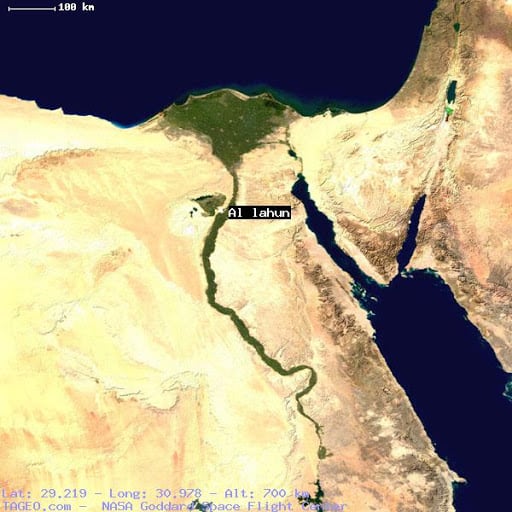
Egypt’s Sahara Desert has many alluring attractions. Cool oases. Ancient ruins. Camel caravans.
Al Lahun is not one of them.
Located 60 miles south of Cairo, Al Lahun is a desert hell hole worthy only of contempt and the occasional scorpion. I took a third-class train filled with locals spilling out through the window and onto the roof. I managed to avoid the knife a screaming, jabbering youth next to me swung around like a samurai while he cut his cucumber, which, after a three-hour ride, I wanted to see if it fit in one of his orifices.
This journey came during my 1978-79 trip around the world. I was on a tight budget and spent a month in Egypt on $5 a day. My hotel was 50 cents. It was a ripoff. How filthy was it?
The toilet doubled as the shower drain.
I visited Al Lahun on a day trip from nearby Faiyum, a bigger town rich in archaeological sites off the beaten path. El Lahun does have an oasis, which was merely a small lake on the edge of the crude, dust-covered village. I walked through town and a crowd of youths began following me. I kept walking. The crowd grew bigger. It soon became louder. They screamed at me in Arabic and the lone English sentence they learned. “What time is it now!”
It was time to leave. Children began jumping and trying to touch my hair. They pulled at my clothes. Up ahead, between us and the bush taxi stop, stood a full-grown water buffalo and a boy with a machete. He cut off its head.
As the buffalo fell, so did I. After I recovered, a teacher approached and asked what I wanted.
“I merely wanted to sit by the lake and read and enjoy the surroundings,” I said.
“You can’t do that here,” she said. “Most of these children have never seen a white person before.”
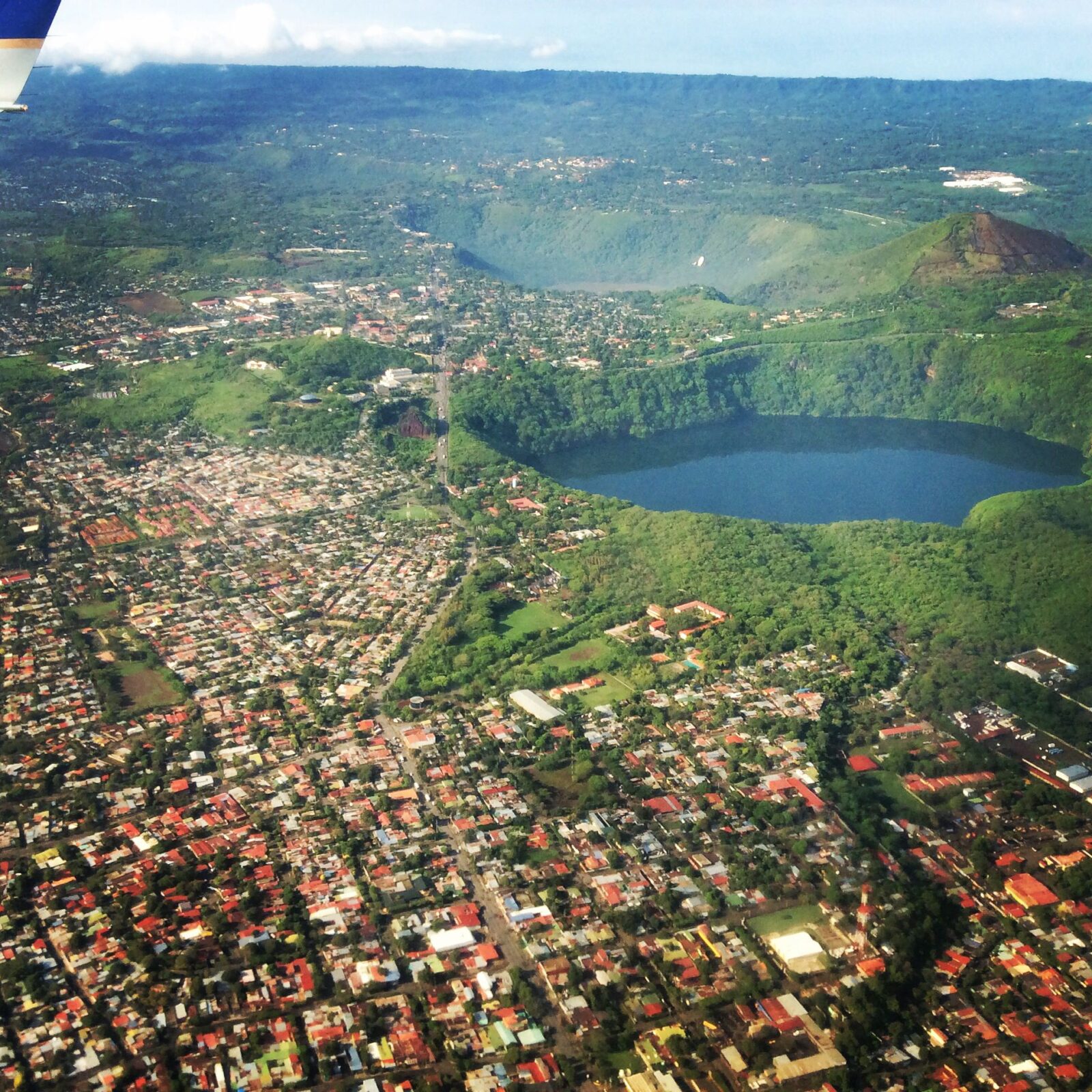
Managua, Nicaragua
I’m an American and have been to nearly every major city in the U.S. I know a little about crime.
Managua is the most dangerous city I’ve ever visited.
How dangerous? When I booked my hotel for a one-night layover on my way to the Corn Islands, the hotel owner told me I must arrange a driver first. Why? I said I’ll just grab a cab at the airport.
No.
He said Managua is famous for pirate cabs who pick you up at the airport then pick up friends then drive you at knifepoint to the nearest ATM. That’s where your vacation and savings get ruined.
When I visited in 2012, Nicaragua was in the midst of a major crack cocaine crisis. My hotel was between two major crack dens. It was two blocks from Managua’s main bus station and the owner said he meets hotel guests and accompanies them back.
When I went to dinner, my driver the owner assigned me took me to the restaurant and waited outside until I finished and drove me back.
Most visitors stay at the Holiday Inn across the street from the airport. I wanted a real Managua experience. The owner, a kind Managuan and business grad from Cal State-Los Angeles, recommended the local outdoor bar catty corner from the hotel. He said to be very careful walking across the street.
“What?” I said. “It’s just across the street!”
“Be very careful walking across the street.”
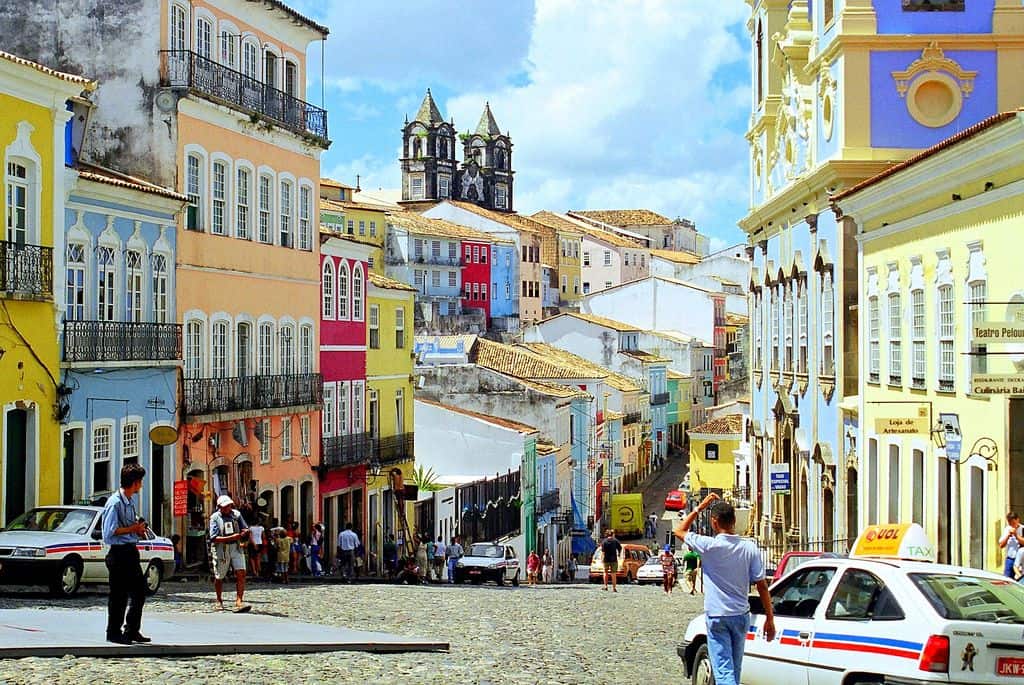
Salvador, Brazil
People hate certain places for different reasons. All are very personal. People hate bars. Thus, they hate Bangkok. People hate shopping. Thus, they hate Singapore.
I hate music. Thus, I hate Salvador.
Salvador, Brazil’s third-largest city with 2.9 million people, is the music capital of Brazil. I was working my way up the Brazilian coast and Salvador is the first major city in Bahia, a beautiful, beach-rimmed state with miles of fine white sand, mountains and clear water from a multitude of rivers.
UNESCO named Salvador its City of Music in 2015 and is famous for its Carnival, called the largest party in the world. It attracts four million people over a week on 16 miles of streets. Salvador is the birthplace of bossa nova and samba and the bulk of its economy relies on music.
Salvador is also called Brazil’s African soul and I couldn’t get away from it. Music seemingly poured out of every window, every beach bar, every plaza, like sweat from my pores in the town’s steaming climate. They have these movable trucks called a trioeletrico that move around for instant outdoor music events. I felt less out of place in Buddhist monasteries.
The African rhythms were a nice change from the monotonous, homogenized music of the rest of Latin America where everything sounds the same from Tijuana to Tierra del Fuego. But I don’t like any music, from country and western to classical with a lone exception of an occasional Miles Davis sax solo.
Salvador is also mind-melting hot. It was 90 degrees with 70 percent humidity when I visited and its Porto da Borsa Beach is almost libelously called one of the best beaches in the world. The beach farther north in Natal is much nicer.
Highlands Ranch, Colorado
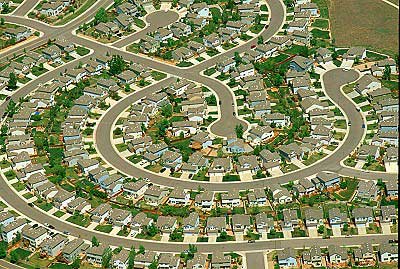
I lived in Denver from 1990-2014 and every time I stumbled into this miserable, pretentious suburb I wanted to poke out my eyes with a martini spear from its local divorcee bar.
Highlands Ranch has as many McMansions as any place in America. Drive around and every house looks the same; every neighborhood looks the same. I found it easier to find my way out of the Amazon Jungle than Highlands Ranch’s maze of identical streets.
If we still had a Cold War, the Soviet Union would use an aerial view of Highlands Ranch as an example of the evils of capitalism.
Not established until 1978, the population has skyrocketed from 17,000 in 1991 to 97,000 today. By 2013, the average mortgage was $2,070 a month and $1,504 to rent. It was considered a goal to “Buy a home in Highlands Ranch.”
Yet I’ve had friends buy homes way too large for one person or a couple and wound up more bored than a puppy in a cage. You need your car to get a pint of milk.
What Gertrude Stein wrote about Oakland holds true to Highlands Ranch: “There is no there there.”

Ambergris Caye, Belize
The most famous and popular caye in Belize, Ambergris Caye was one of the biggest disappointments of my life. Teased by tales of long, sugary-sand beaches and local culture, I spent a few nights there before a scuba diving vacation on South Water Caye, 15 miles off the coast.
Located just off the north coast of Belize, Ambergris Caye has the vibe of a miniature Corpus Christi on spring break. Direct flights from Houston fill the 28-mile-long island with tacky Texans hell bent on getting hammered every night and more sunburned every day. Many never bothered to return. The island’s population has grown from 2,000 in 1997 to 8,000 in 2001 to 15,000 today.
The main town of San Pedro is one long souvenir shop broken up by the occasional dive shop. The diving is quite good. It’s the base for Belize’s famous Blue Hole dive site. My dives were excellent but my one snorkel came at Shark-Ray Alley where dozens of tourists splash around with a large school of growingly annoyed stingrays and nurse sharks. Few things in life are less fun than an annoyed nurse shark.
The beach is great if you’re a sand crab. It’s narrower than some sand traps at Augusta National and the water is so shallow you must walk 200 meters to get up to your waist. Add hungry and invisible sand fleas to the equation and you’ll be too busy itching to drink your sorrows away.
Months later a colleague at my Denver Post wrote a travel story saying Ambergris Caye was the most beautiful place he’d ever been. As I’ve always said, the beauty of travel is one man’s hell can be another man’s paradise.

Cancun, Mexico
This may be low. I LOATHE Cancun like bad tequila of which there is plenty in the long string of bars in Zona Hotelera. I only rank it seventh because it does have beautiful beaches, none of which I’ve experienced because it poured the three times I came on layovers.
Taco Bell has more Mexican culture than Cancun. It has been a famed spring break destination for American college kids since I was in college in the 1970s. It has only grown more American with American chains such as Planet Hollywood and Gump’s Shrimp House desecrating the business landscape.
In 2019 it attracted more than 6 million tourists, mostly from the U.S. As big a lure as the beaches and long string of resorts is the bar life in Zona Hotelera. It’s one neon sign after another.
As I wrote in my journal, “If planet Earth had a morality scale, you could only locate Cancun with a submarine. This place makes Las Vegas look like the Vatican on Easter Sunday.”
Clubs compete with each other with barkers outside the entrances asking me, not so subtly, “Yoo like ooman? You like somting else?”
In many clubs I could pay $40 for all I could drink. These aren’t clubs as much as vomitoriums. I saw more than a couple people helped downstairs or out the door by friends who could barely walk themselves. Vomit peppered the sidewalk.
I lasted only 2 ½ hours and hailed a cabbie who rescued me from a hooker whom the cabbie said was a man, a growing trend. But the cabbie was no good samaritan. On my ride back to my hotel he tried pitching me a woman.
“Full treatment: One hour $300,” he said.
“Sorry. I came here to drink and read in the sun.”
“I have one 14.”
“Um, isn’t that illegal?”
“No. This is Mexico.”
My lone highlight of Cancun is La Habichuela, a beautiful restaurant serving authentic Mayan food in Cancun’s quiet old town. But since I last visited Cancun in 2013, Los Zetas drug cartel has moved in and in 2017 this city of 530,000 had 193 murders, above the national average in one of the most violent countries in the world.
Two years later Cancun had its first dip in tourism in seven years.
Dubai
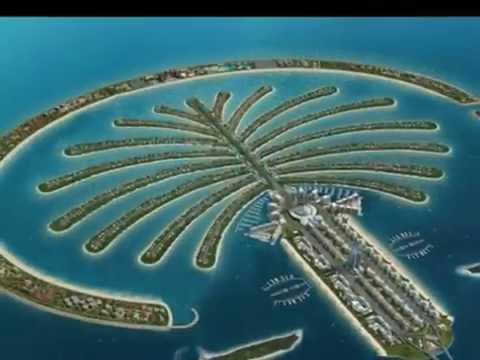
I can’t call this place an Islamic theme park because I couldn’t find much representing Islam. Dubai truly sucks. I went on a day trip during a wonderful, long 2019 weekend in beautiful Abu Dhabi and am glad my Dubai experience lasted less than a day.
Dubai is a monument to excessive opulence catering to Western tastes. It’s like the United Arab Emirates is telling the world, “Yes, we’re filthy rich. Yes, our GDP is $108 billion. Yes, we’ll build indoor ski slopes and rain forests simply because we can.”
The city has more skyscrapers than any in the world. The tallest of them all, the 2,722-foot Burj Khalifa, looks like a needle out of a rich woman’s jewelry box. Dubai blinds you with bling.
When oil was discovered in the UAE in 1960, Dubai became one of the top gold trading centers in the world. Today it is known as “City of Gold.”
It has 70 shopping centers and four water parks, one at the end of an artificial island shaped like a palm frond. I inquired about cooling off and the entry fee was 72 euros.
Seeking some culture somewhere I went to the souqs which were expensive and lacked variety and friendliness. The city’s intense heat index isn’t helped by pollution Greenpeace ranked as the 10th worst in the world.
Yet Dubai is still a hugely popular destination for Westerners who love the luxurious pools in expensive high-rise hotels serving pretty cocktails in a country that abhors alcohol. Then again, booze sells.
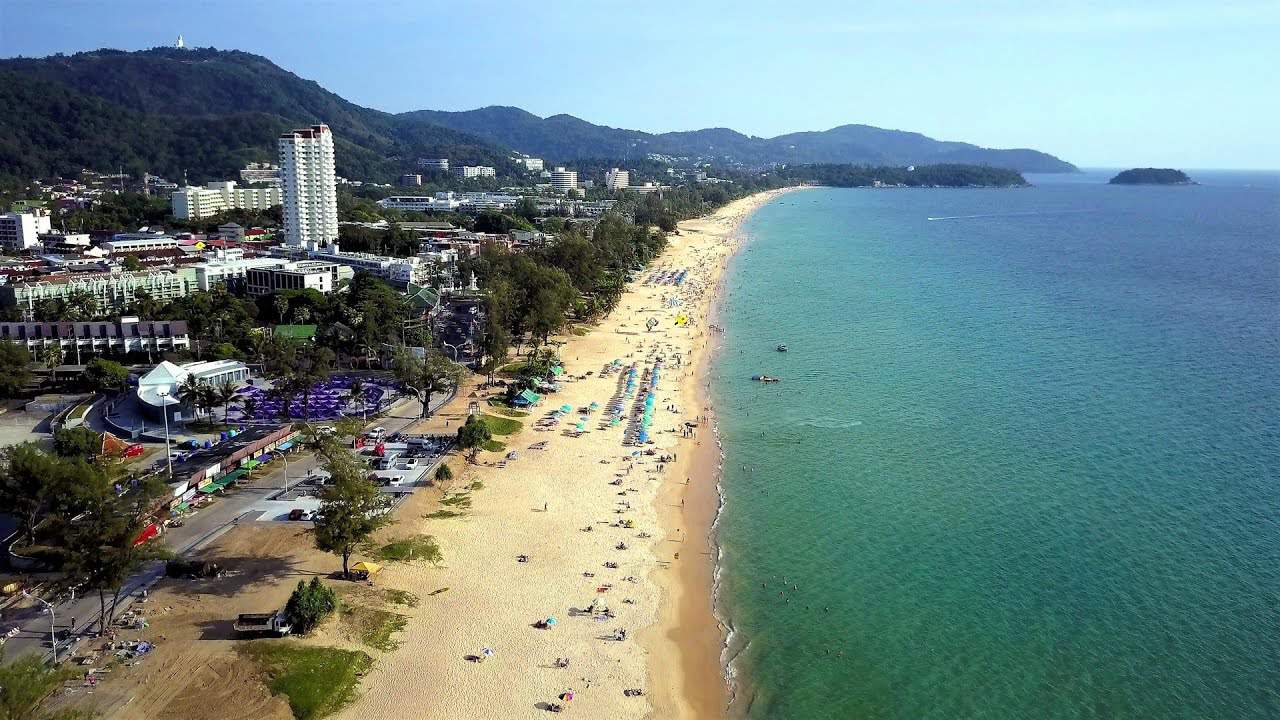
Phuket, Thailand
My first trip to Phuket came in 1979. It had no airport. I took a boat over from the mainland. I had a bamboo-thatched hut on a gorgeous, unspoiled Karon Beach for about $3. I snorkeled every day in the crystal-clear Andaman Sea and ate shark and fresh pineapple every night. I took a tuk tuk, Thailand’s little three-wheeled, motorized cabs, to the main village.
I returned in 1987, needing R&R after a two-week trek to Nepal’s Annapurna Sanctuary. I flew direct from Bangkok to Phuket’s sparkling airport and took a modern taxi to a Karon Beach I didn’t recognize. The area had so many German tourists they had bratwurst shops on the beach.
The 2004 tsunami killed 250 people on the island and severely damaged many resorts. However, the resorts have been restored and the growth continues. The population of 415,000 has nearly doubled since 2000. In 2017, this island of 222 square miles had 10 million tourists.
However bad Karon Beach is, Patong Beach farther north is worse. Tourism has gone nearly unchecked in Thailand but there are many islands worthy of paradise. Ko Kut is on my wish list. I hear Koh Libong is nice.
Phuket was spoiled 34 years ago. I can’t imagine what it’s like now.
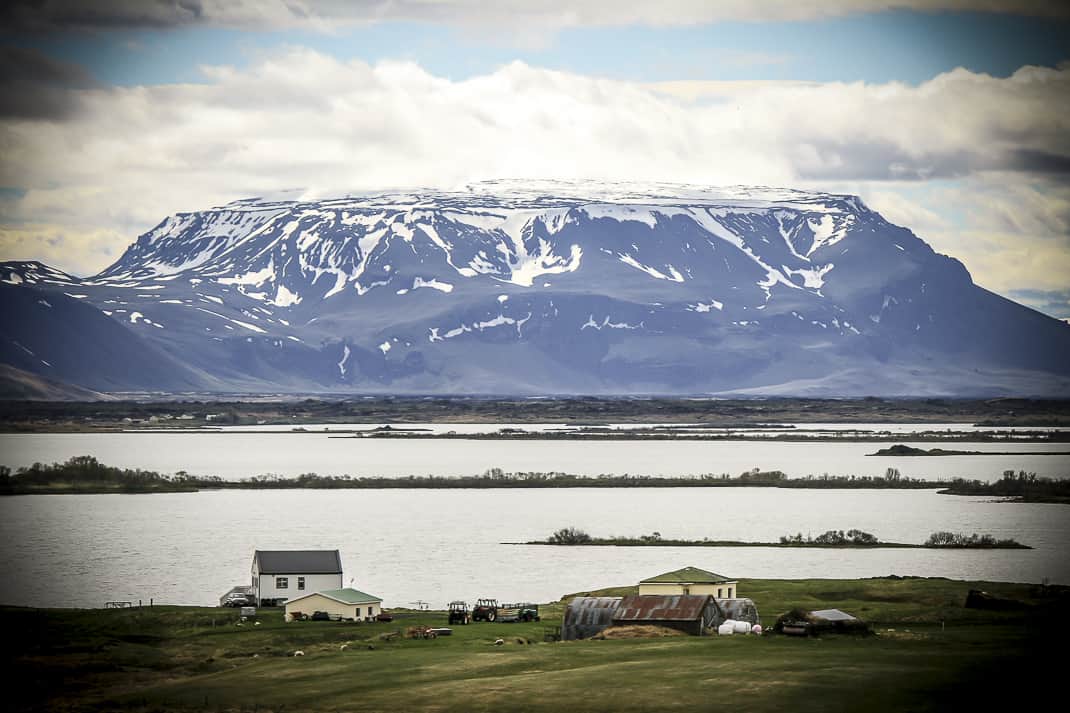
Iceland
It pains me to list Iceland because it’s one of the most beautiful places on earth with gentle, friendly people, every one of whom is fluent in English. Like the Taj Mahal and Egypt’s Pyramids, Iceland’s volcanic landscape must be seen to be believed. I’d return just to climb a volcano and soak in the plethora of natural hot springs.
But it is the most expensive place I’ve ever been. Yes, worse than Norway. Yes, worse than Switzerland. Japan? Ha! I could get a great bowl of noodle soup in Tokyo for a reasonable price. In Iceland, a hamburger was $20. A piece of fish in a village inn from the lake across the street was $38. A beer was $12.
In Iceland, every time I paid a bill I felt violated.
The bars have a happy hour where beers drop to $8-10. Bartenders explained to me the heavy tax on alcohol in the socialized economy forces bars to jack up the prices. One bartender felt so sorry for me he sold me a beer for $10.
It’s so expensive, locals in the capital of Reykjavik buy booze in cheaper, government liquor stores and drink at home until about 1 a.m. Then they take an exorbitant cab ride downtown where they nurse two beers all night in a pub crawl they call djammio.
I spent 12 days in 2017 driving 2,100 kilometers around the country and found myself eating lunch — a cellophane wrapped deli sandwich — in my rental car. Granted, I was staring at Snaefellsjokull, the volcano Jules Verne used for his novel, “Journey to the Center of the Earth,” but that is travel survival in Iceland.
I interviewed the Visit Reykjavik director and told her that the country was pricing itself out of the tourist market. She smiled and said the country’s hotels were running 95 percent capacity. The capital wants to double its number of hotel rooms from 4,700 by next year.
But who am I to judge? In exit interviews at the airport, 98 percent of visitors said they’d recommend Iceland to others. I guess I would, too.
Just bring a lubricant.


January 6, 2021 @ 1:12 am
Highlands Ranch? Really? It’s the American dream, my friend!
I agree with you about most of your list. As a closet architect I found Dubai intriguing and absurd, but my wife didn’t like it. Our daughter is an international travel guide who used to go to Iceland all the time and loves it. Also like the fact that you found La Habichuela in Cancun. We’ve been there twice, last time in 2008, and it was kind of scary getting to and from the restaurant already then. We own a timeshare in Mexico (multiple locations) and haven’t gotten the nerve to return since about 2014.
January 6, 2021 @ 3:55 am
Ahh yes Phuket, 1979. Me too. Great memories, warm clean water & beautiful little cottages on the beach. So economical we splurged and got one each for our group of four women friends. However the owner of our accommodation insisted we not walk to the next restaurant through the coconut grove alone, and reassured us we were safe by showing us his rifle. Kept under the bar. People were poor.
As for Dubai, an Australian woman journalist called it the Death Star.
Great article by the way. M
January 7, 2021 @ 2:53 am
The Death Star. Great line. I may have to use that next time. My responses are overwhelmingly thumbs up on Dubai. People I know who like Dubai are pretty pretentious and shallow, just like Dubai. But I HIGHLY recommend Abu Dhabi.
January 6, 2021 @ 5:39 pm
Sihanoukville Cambodia! Ugly, dirty, overrun by Chinese hotels and casinos.
January 7, 2021 @ 2:57 am
Sihanoukville? Amazing you mentioned it but I’m not surprised. I went there in 2005 and it was paradise. Hardly any guesthouses. Lobster on the beach for about $5. Great beach. I had to hail a kid on a motorbike to take me to the beach and pick me up a few hours later. Then I went to Laos in 2017 and every backpacker I met there had come through Cambodia. They all went to Sihanoukville. I think you confirmed what I already suspected. Thanks for the note.
January 12, 2021 @ 1:43 am
John, great list. Love your wit! Need to contact you about living in Rome! – Christine
May 11, 2021 @ 8:26 am
Sorry, Christine. I just read your comment about my 10 Worst Places to Visit. If you have any questions about moving here, let me know.
February 24, 2022 @ 7:41 pm
Why are you only basing these experiences of clubs? Tell us how the rest was.